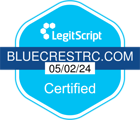The exploration of non-opioid pain management techniques in recovery presents a compelling alternative to traditional opioid therapies, addressing not only the physical dimensions of pain but likewise its emotional and psychological impacts. Approaches such as physical therapy, mindfulness, and acupuncture offer a holistic framework that promotes patient empowerment and resilience. As the healthcare environment evolves, understanding the efficacy and integration of these methods becomes essential. What implications do these strategies hold for long-term recovery outcomes and patient quality of life? The answers may reshape our approach to pain management significantly.
Understanding Non-Opioid Pain Management
Recognizing the limitations and risks associated with opioid use, healthcare professionals are increasingly turning to non-opioid pain management techniques as a viable alternative for patients in recovery. These approaches focus on improving pain perception through a multifaceted lens, addressing not only physical symptoms but also emotional and psychological well-being. Alternative therapies, such as acupuncture, massage, and mindfulness meditation, are integral to promoting holistic wellness. They empower individuals to take an active role in their recovery journeys, encouraging emotional resilience and coping strategies.
Patient education plays a significant role in this process, equipping patients with knowledge about various methods available to manage chronic conditions effectively. Moreover, lifestyle adjustments, including diet and exercise, contribute to overall health improvement. Therapeutic exercises tailored to individual needs boost physical capabilities and reduce discomfort. An integrative health approach, combining non-opioid techniques with traditional medical care, offers a comprehensive framework. As healthcare professionals prioritize these methods, they pave the way for patients to achieve sustainable recovery while minimizing the risks associated with opioid dependence.
Benefits of Non-Opioid Techniques
Non-opioid pain management techniques offer numerous benefits that can significantly improve the recovery process for individuals experiencing chronic pain. One of the primary advantages is the minimization of risks associated with opioid use, including dependency and adverse side effects. By focusing on non-opioid methods, patients can engage in holistic healing practices that promote overall well-being rather than merely masking pain. These techniques often improve the mind-body connection, nurturing a deeper awareness of bodily sensations and emotional responses. Practices such as mindfulness, meditation, and yoga encourage individuals to explore their pain in a safe, non-judgmental manner.
Non-opioid approaches like acupuncture and cognitive-behavioral therapy address the physiological and psychological components of pain, offering a rounded perspective on recovery. In addition, non-opioid techniques empower patients to take an active role in their healing journey, boosting motivation and adherence to treatment plans. Overall, embracing these alternatives not only alleviates pain but promotes a sustainable, healthy lifestyle, supporting long-term recovery goals without the pitfalls of opioid dependency.
Physical Therapy Approaches
Physical therapy approaches play a crucial role in non-opioid pain management, providing patients with tailored strategies to improve mobility and reduce discomfort. By utilizing comprehensive pain assessment methods, therapists can identify specific areas of concern and develop individualized plans. This personalized approach addresses the physical aspects of pain and improves the overall well-being of patients. Therapeutic exercises form the cornerstone of many physical therapy regimens, designed to strengthen muscles, improve flexibility, and promote functional movement.
Moreover, techniques such as manual therapy, modalities like heat and ice application, and neuromuscular re-education can further improve the effectiveness of therapeutic exercises. Regular reassessment of pain levels ensures that the treatment plan remains dynamic and responsive to the patient’s evolving needs.
Mindfulness and Meditation Practices
Mindfulness and meditation practices increasingly serve as effective tools for managing pain, offering individuals a means to cultivate awareness and nurture calm amidst discomfort. By employing mindfulness techniques, individuals can improve body awareness, recognizing and accepting pain without judgment. This acceptance is vital for emotional regulation, promoting resilience in facing discomfort. Meditation benefits extend beyond immediate pain relief to include long-term improvements in stress reduction.
Visualizations and guided imagery empower individuals, allowing them to envision a pain-free state or soothing environment. Incorporating self-compassion practices into these routines can improve healing and encourage a positive outlook. Ultimately, mindfulness and meditation not only alleviate pain but also promote a deeper understanding of the self, paving the way for a more holistic recovery approach.
Acupuncture and Acupressure
Acupuncture and acupressure, rooted in ancient traditions, offer a compelling alternative for pain management, particularly in recovery. These techniques involve stimulating specific points on the body to alleviate discomfort and promote healing, showcasing their historical efficacy. Understanding their application methods can improve the integration of these practices into modern pain management strategies. Recent research findings from the University of Texas have highlighted the potential of these methods for managing neuropathic pain.
Historical Context and Efficacy
Throughout history, various cultures have embraced the healing potential of acupuncture and acupressure as effective non-opioid pain management techniques. Originating in ancient China over 2,500 years ago, these practices have undergone significant treatment evolution. Acupuncture employs fine needles, whereas acupressure relies on manual pressure, both aiming to restore balance and alleviate pain. Research has validated these techniques, showing effectiveness for chronic pain conditions like lower back pain and migraines.
Acupressure has gained recognition for reducing tension and improving relaxation. The historical context of these modalities underscores their resilience and adaptability, leading to a growing acceptance in contemporary medical practices. As healthcare shifts toward holistic approaches, acupuncture and acupressure stand out, offering patients a pathway to recovery without opioid reliance.
Techniques and Application Methods
Harnessing principles of traditional Chinese medicine, acupuncture and acupressure offer distinct techniques for pain management. Acupuncture involves inserting fine needles to stimulate energy flow, while acupressure applies manual pressure, accessible for self-care. Both can integrate with aromatherapy, using oils for relaxation and pain relief. Incorporating energy healing practices can amplify effects, and combining with massage, nutrition strategies, and movement therapies encourages comprehensive recovery.
Sound therapy and guided imagery paired with these techniques promote mental well-being. Breathing exercises and therapeutic touch contribute to a balanced pain plan, empowering individuals in their recovery journey. Integrative methods present a promising alternative, paving the way for sustainable healing.
Chiropractic Care
Chiropractic care offers a holistic approach to pain management, focusing on the musculoskeletal system to improve overall well-being. By employing various techniques such as spinal manipulation and soft tissue therapy, chiropractors effectively alleviate discomfort and encourage healing. Integrating chiropractic methods into recovery plans supports physical rehabilitation and nurtures patients seeking non-opioid alternatives for pain relief.
Benefits of Chiropractic Care
A holistic approach to pain management often includes chiropractic care, effective in alleviating discomfort without opioids. This treatment focuses on spinal alignment and adjustments, improving wellness and recovery. The benefits of chiropractic care extend to improved body mechanics, injury prevention, patient education, and lifestyle improvement. These adjustments correct misalignments, improve physical function, and encourage a comprehensive approach to recovery.
Techniques and Methods Used
Various techniques in chiropractic care contribute significantly to its effectiveness in pain management. Primary among these is spinal manipulation, realigning the vertebrae to alleviate nerve pressure and improve function. Neuroplasticity training focuses on retraining the brain’s response to pain, creating new neural pathways for symptom management. Sensory modulation involves techniques that address sensory processing, using therapies to reduce perception.
Together, these techniques create a holistic approach to pain management, nurturing a sense of well-being and supporting recovery without reliance on opioids or medications.
Integrating With Recovery Plans
Incorporating chiropractic care into recovery plans offers a multifaceted approach to pain management that aligns with healing principles. This integrative approach allows for personalized plans considering patient needs. Promoting collaboration between chiropractors and healthcare providers, chiropractic care supports integration emphasizing active engagement and empowerment.
Key elements include non-invasive options providing relief without opioids, holistic strategies promoting wellness, and patient engagement in recovery through exercises. Ongoing assessments ensure plans remain responsive, facilitating necessary adjustments.
Herbal Remedies and Supplements
Herbal remedies and supplements offer alternatives for managing pain, especially in recovery from dependence. These natural options provide holistic benefits, addressing both physical discomfort and emotional well-being. Their use requires careful consideration of safety and efficacy. Adhering to dosage guidelines minimizes interactions with other medications. Many herbs have traditional uses, but sourcing quality products is crucial for potency and safety.
Regulatory concerns necessitate vigilance; consumers should seek products with third-party purity testing. Consult healthcare professionals before new supplements to mitigate adverse effects. Though many find relief through herbal remedies, not all supplements are universally effective. Individual responses vary, underscoring personalized approaches. Used thoughtfully, herbal remedies can be a valuable component in pain management during recovery.
Cognitive Behavioral Therapy
Cognitive Behavioral Therapy (CBT) has emerged as a powerful tool in managing pain and recovery, offering effective strategies for coping with physical discomfort and related psychological challenges. Addressing the interplay between thoughts, emotions, and behaviors, CBT empowers individuals to reshape pain perceptions, elevating quality of life. Methods include cognitive restructuring to identify negative patterns, behavioral activation, mindfulness techniques for present awareness, and skill-building in relaxation and problem-solving strategies.
Lifestyle Modifications
Daily habits significantly impact pain perception and recovery, making lifestyle modifications essential in non-opioid pain management. Implementing dietary changes, such as anti-inflammatory foods, and regular exercise tailored to capabilities improve physical function and well-being. Sleep hygiene and a restful environment reduce pain sensitivity. Stress reduction strategies like mindfulness and hydration maintain bodily functions, offering relief.
Engaging socially improves emotional well-being, with creative outlets providing therapeutic benefits. Effective time management and goals empower individuals by breaking tasks into manageable steps, reducing overwhelm. Environmental adjustments like ergonomic furniture support healing, contributing to a supportive atmosphere and healthier lifestyle.
Support Groups and Community Resources
Recognizing the importance of community in the healing process, support groups and community resources play an essential role in non-opioid pain management. These networks nurture peer support, which improves emotional resilience and encourages individuals to share their experiences. Community-driven initiatives can significantly alleviate the burden of pain management. Support systems within local networks not only facilitate recovery but empower individuals to take control of their pain management strategies.
Educational programs, community workshops, and resource sharing facilitate connections and insights. Engaging with others creates a sense of belonging, reducing isolation. Harnessing the power of support groups and community resources offers a holistic approach, allowing participants to develop strong resilience and hope in their recovery.

Final Thoughts
To summarize, non-opioid pain management techniques offer a comprehensive approach to recovery that addresses the multifaceted nature of pain. By integrating physical therapy, mindfulness practices, acupuncture, and cognitive behavioral therapy, individuals can develop sustainable strategies. Lifestyle modifications and community support improve resilience and empower recovery. Emphasizing these diverse methods mitigates risks associated with opioid use and promotes overall well-being.
If you or a loved one is struggling with addiction, remember that you don’t have to navigate this journey alone. At BlueCrest Recovery, we’re here to provide the support and resources needed to help you move from a place of powerlessness to one of strength and healing. Don’t hesitate to reach out to our team online or call us today. Let us walk with you on your journey to recovery. Follow us on Facebook for ongoing insights, encouragement, and support.
Frequently Asked Questions
What Are the Costs Associated With Non-Opioid Pain Management Techniques?
Cost analysis of non-opioid pain management techniques reveals varying expenses related to treatment accessibility. Although initial costs may be higher, long-term benefits, including reduced dependency and improved patient outcomes, often justify the investment in alternative therapies.
How Long Does It Take to See Results From These Methods?
The pain relief timeline for non-opioid pain management methods varies, typically ranging from days to weeks. Treatment effectiveness is influenced by individual factors, including condition severity and adherence to prescribed interventions, necessitating personalized approaches for ideal results.
Are There Any Risks or Side Effects of Non-Opioid Treatments?
Non-opioid treatments can present adverse reactions, including gastrointestinal issues or allergic responses. Nevertheless, their treatment efficacy often outweighs these risks, as they provide alternative pain management solutions with reduced potential for addiction and dependency.
Can Non-Opioid Techniques Be Combined With Other Pain Management Strategies?
Yes, non-opioid techniques can be effectively combined with integrative approaches and multimodal therapies. This combination improves pain management outcomes by addressing various aspects of pain, promoting holistic healing, and minimizing reliance on any single treatment modality.
How Do I Choose the Right Non-Opioid Method for My Pain?
Selecting the appropriate non-opioid method for pain management entails contemplating alternative therapies that align with patient preferences, evaluating efficacy, potential side effects, and individual pain profiles to guarantee a personalized and effective approach.


















